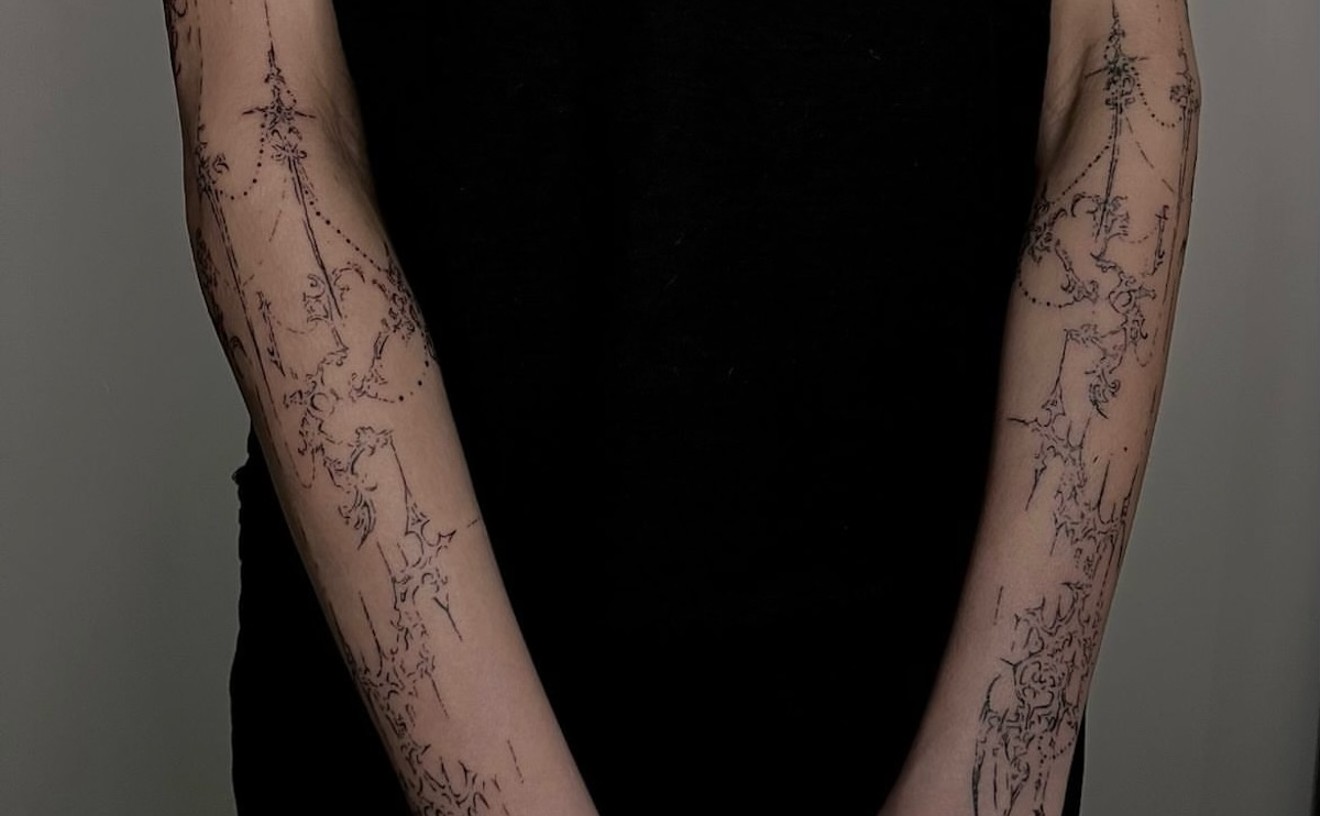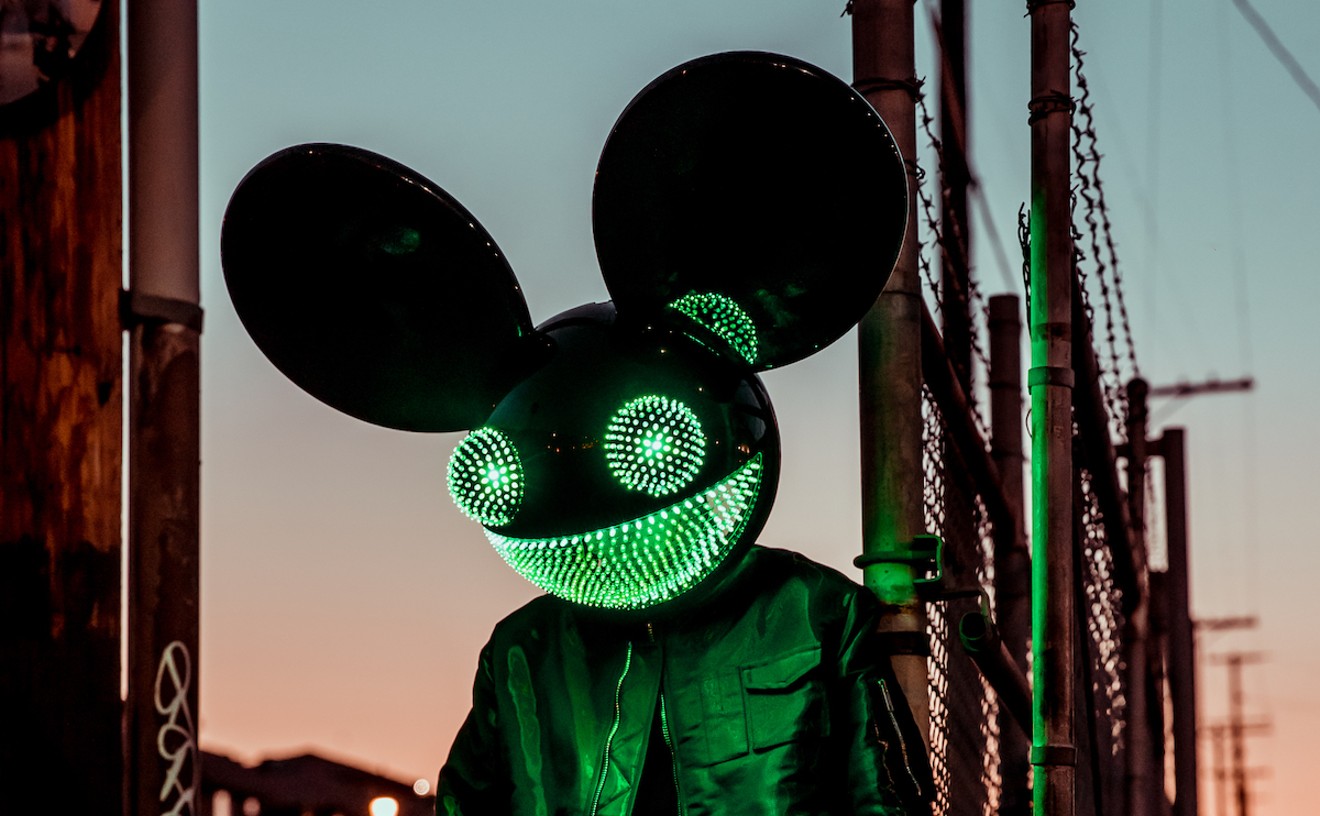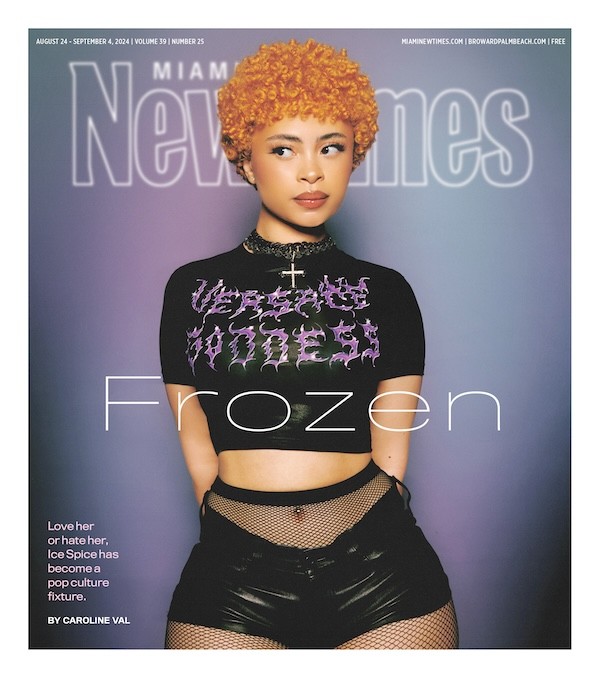It was among the most significant meetings in Amy Padolf’s career, and she barely remembers any of it. In fact, her boss, Dr. Carl Lewis, had to recount what happened once they'd left the Kennedy Space Center conference room last summer. “It’s all just a big blur to me,” Padolf tells New Times. “I was just totally starstruck. We both were.”
The meeting began a partnership between Fairchild Tropical Botanic Garden in Coral Gables and one of the largest, most prestigious scientific institutions in the world. And Padolf's half-conscious proposal has since blossomed into the almost $1.25 million grant that NASA awarded Fairchild last week, which will fund continued collaboration between NASA scientists and the garden and students across Miami-Dade, as they help investigate the best ways to naturally nourish astronauts on deep space voyages, such as those to Mars.
Padolf, who is Fairchild’s director of education, wants to be an astronaut. She's pretty sure Lewis, Fairchild’s director, wants to be one too. “We’re both obsessed with NASA,” she says without a trace of exaggeration. When the two Fairchild botanists saw a video about a NASA botanist's evolution from elementary school interest in science to employment at the space agency, they decided to reach out and offer their help.
The NASA botanist was Dr. Gioia Massa, who heads a space-crops program called Veggie at the Kennedy Space Center and researches pick-and-eat crop production in deep space. “But Dr. Massa and NASA had only tested a handful of different things,” Padolf says, “primarily due to time, space, and lack of researchers.” Meanwhile, Fairchild had already begun supporting students as citizen scientists with mini botany labs, much like the ones equipped by NASA.
Realizing they had the resources to assist and an admitted self-interest to engage with astronauts, Padolf and Lewis offered Massa their help. Massa responded by inviting them to the Kennedy Space Center for what Padolf thought would include a quick tour, some educational material, and pats on on the back. Instead, the Fairchild crew found itself seated across the table from some of NASA’s highest-ranked scientists, including the deputy director of the International Space Program and the head of Human Exploration and Operations.
Neither Lewis nor Padolf really knew what to do. Both were starstruck – one was tongue-tied and the other was on autopilot. According to Lewis, Padolf broke into a story about how the path of Polynesian voyagers can be traced back by the plants they brought along and left in their wake. At the end of Padolf’s rather random but apparently relevant digression, the head of Human Exploration leaned forward onto the table and said with scientific air, “That’s just like our journey to Mars.”
“At that point, we were like, 'We’re in!'” Padolf recalls.
NASA’s Veggie program tests pick-and-eat crops on Earth as a precursor to feeding deep space exploration. Fairchild partnered with the agency to turn its brains and brawn toward space-crop research. “We’re botanists; we’re plant experts. Plus we had this humongous network of students, citizen scientists who were eager to do so much research that scientists at Kennedy simply didn’t have time to do."
Beginning in August, Padolf and her team supported 125 schools to participate in the Fairchild Challenge to test randomized samples of 51 different pick-and-eat plants. The students were encouraged to send #GrowBeyondEarth tweets weekly. The Google Sheets, where they recorded their data on crop propagation, were shared with NASA scientists. This mutual engagement was an inspiration for both parties.
Padolf is quick to admit the Fairchild project is supportive and doesn't overtake the NASA experts' research. Still, the hefty grant that NASA announced Friday shows just how valuable the agency considers the Miami students’ efforts. Fairchild was one of nine informal learning institutions to receive $420,000 to $1.25 million in funding.
And thanks to the Fairchild Challenge, NASA scientists were able to pinpoint the eight most promising of the 51 crops they’d tested. As the grant money is dispersed over the next four years, Fairchild will use its funding to help students experiment with a number of variables, including fertilizers, monitoring systems, and the nutritional value of the crops.
When The Martian hit theaters in October, just a couple of months after the Fairchild Challenge kicked off, Padolf tried to get Matt Damon to stop by the garden. The actor didn’t oblige. But there was an apparent and unique connection between the Fairchild Challenge participants and Damon’s character, Mark Watney. It’s not often the hero is a botanist.
But in the story, Watney has to fend for himself when he gets stranded on Mars. He has to develop an agricultural system from relative scratch. Fairchild and NASA have other plans in mind.
“We want to figure out what we can grow beforehand and do a lot of the research now to help avoid that guessing game once we get there,” Padolf says.

Audio By Carbonatix
[
{
"name": "Air - MediumRectangle - Inline Content - Mobile Display Size",
"component": "19274298",
"insertPoint": "2",
"requiredCountToDisplay": "2",
"watchElement": ".fdn-content-body",
"astAdList": [
{
"adType": "rectangle",
"displayTargets": "mobile"
}
]
},{
"name": "Editor Picks",
"component": "17482312",
"insertPoint": "4",
"requiredCountToDisplay": "1",
"watchElement": ".fdn-content-body",
"astAdList": [
{
"adType": "rectangle",
"displayTargets": "desktop|tablet"
},{
"adType": "rectangle",
"displayTargets": "desktop|tablet|mobile"
}
]
},{
"name": "Inline Links",
"component": "18711090",
"insertPoint": "8th",
"startingPoint": 8,
"requiredCountToDisplay": "7",
"maxInsertions": 25
},{
"name": "Air - MediumRectangle - Combo - Inline Content",
"component": "17482310",
"insertPoint": "8th",
"startingPoint": 8,
"requiredCountToDisplay": "7",
"maxInsertions": 25,
"watchElement": ".fdn-content-body",
"astAdList": [
{
"adType": "rectangle",
"displayTargets": "desktop|tablet"
},{
"adType": "rectangle",
"displayTargets": "desktop|tablet|mobile"
}
]
},{
"name": "Inline Links",
"component": "18711090",
"insertPoint": "8th",
"startingPoint": 12,
"requiredCountToDisplay": "11",
"maxInsertions": 25
},{
"name": "Air - Leaderboard Tower - Combo - Inline Content",
"component": "17482313",
"insertPoint": "8th",
"startingPoint": 12,
"requiredCountToDisplay": "12",
"maxInsertions": 25,
"watchElement": ".fdn-content-body",
"astAdList": [
{
"adType": "leaderboardInlineContent",
"displayTargets": "desktop|tablet"
},{
"adType": "tower",
"displayTargets": "mobile"
}
]
}
]










